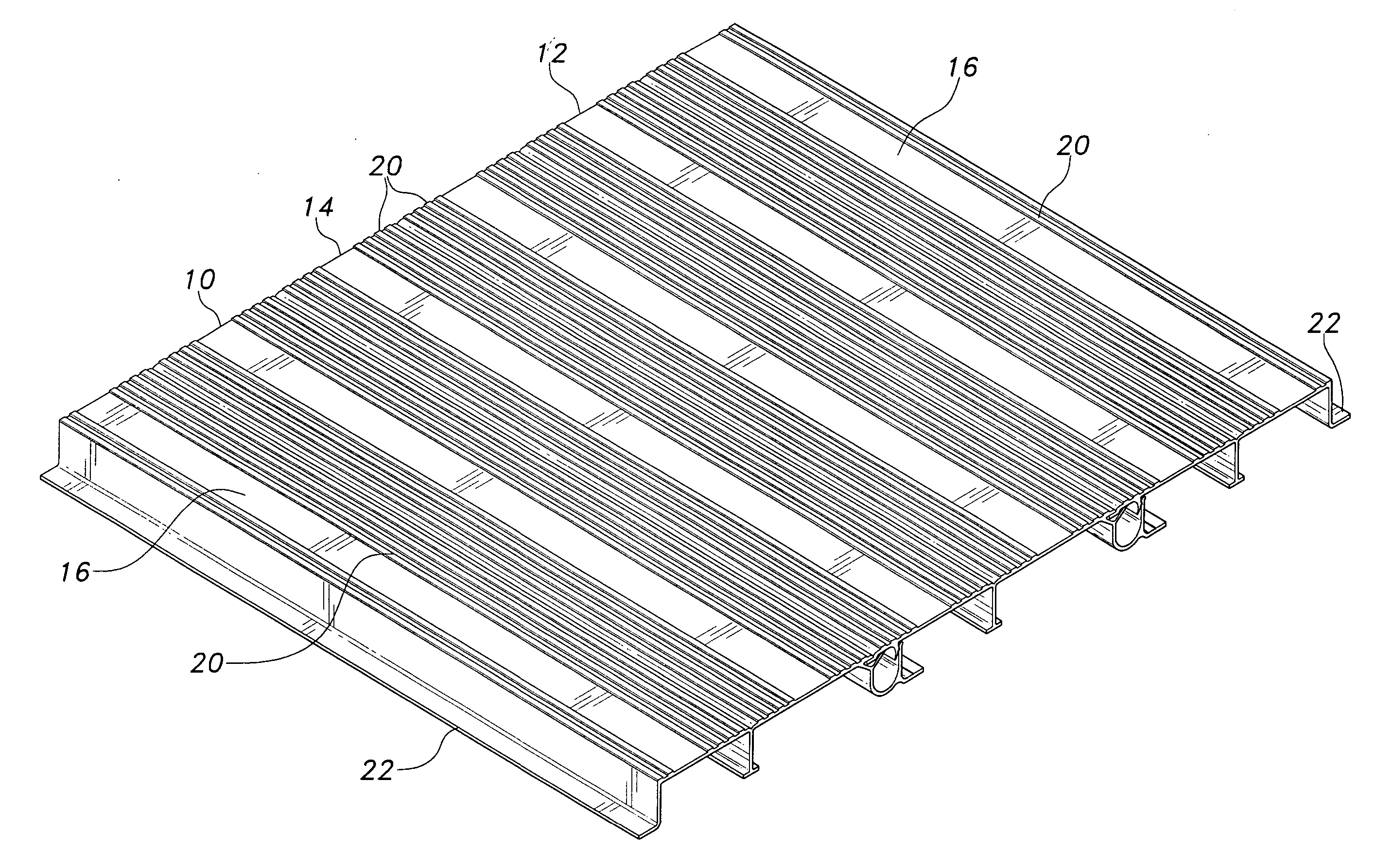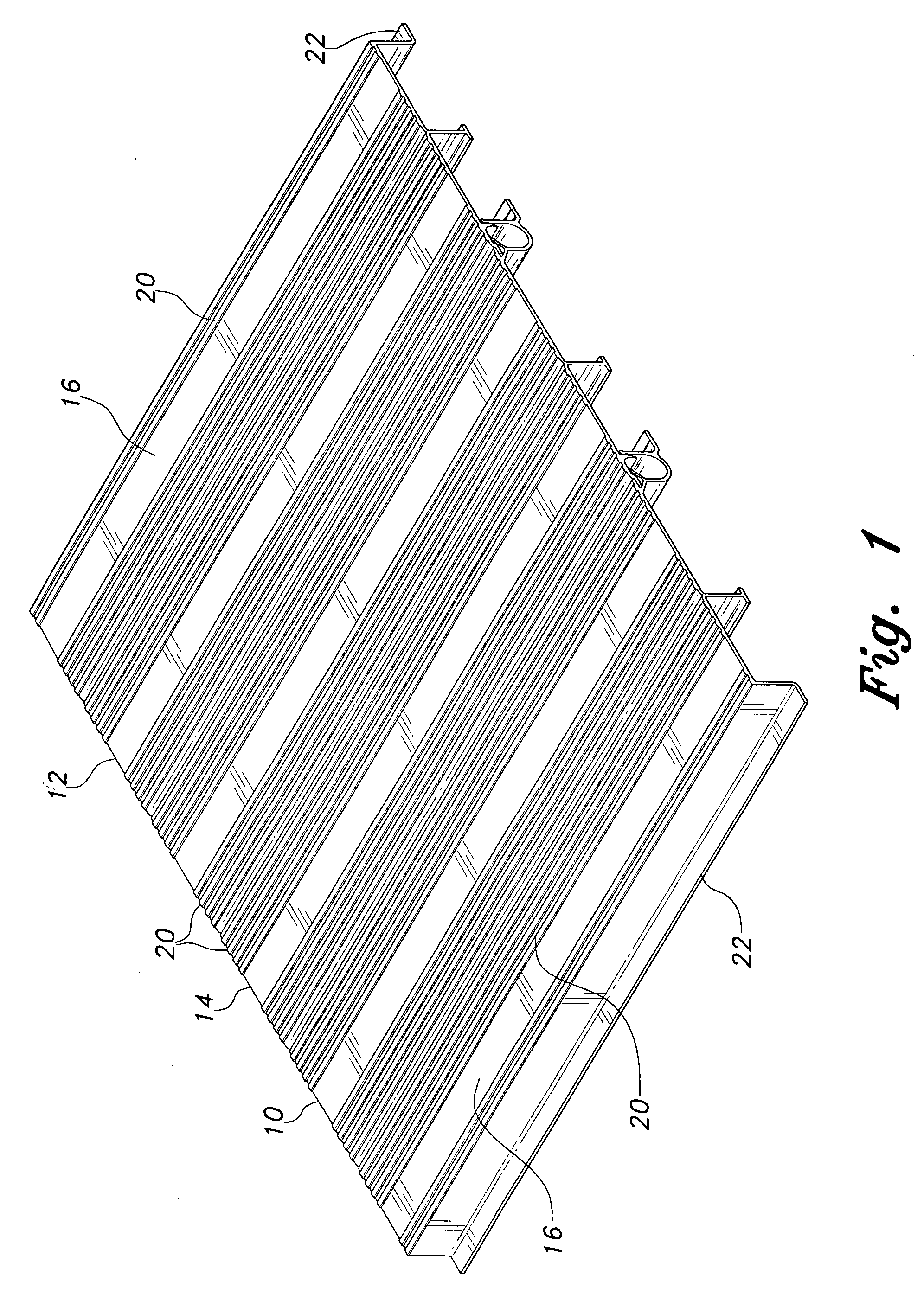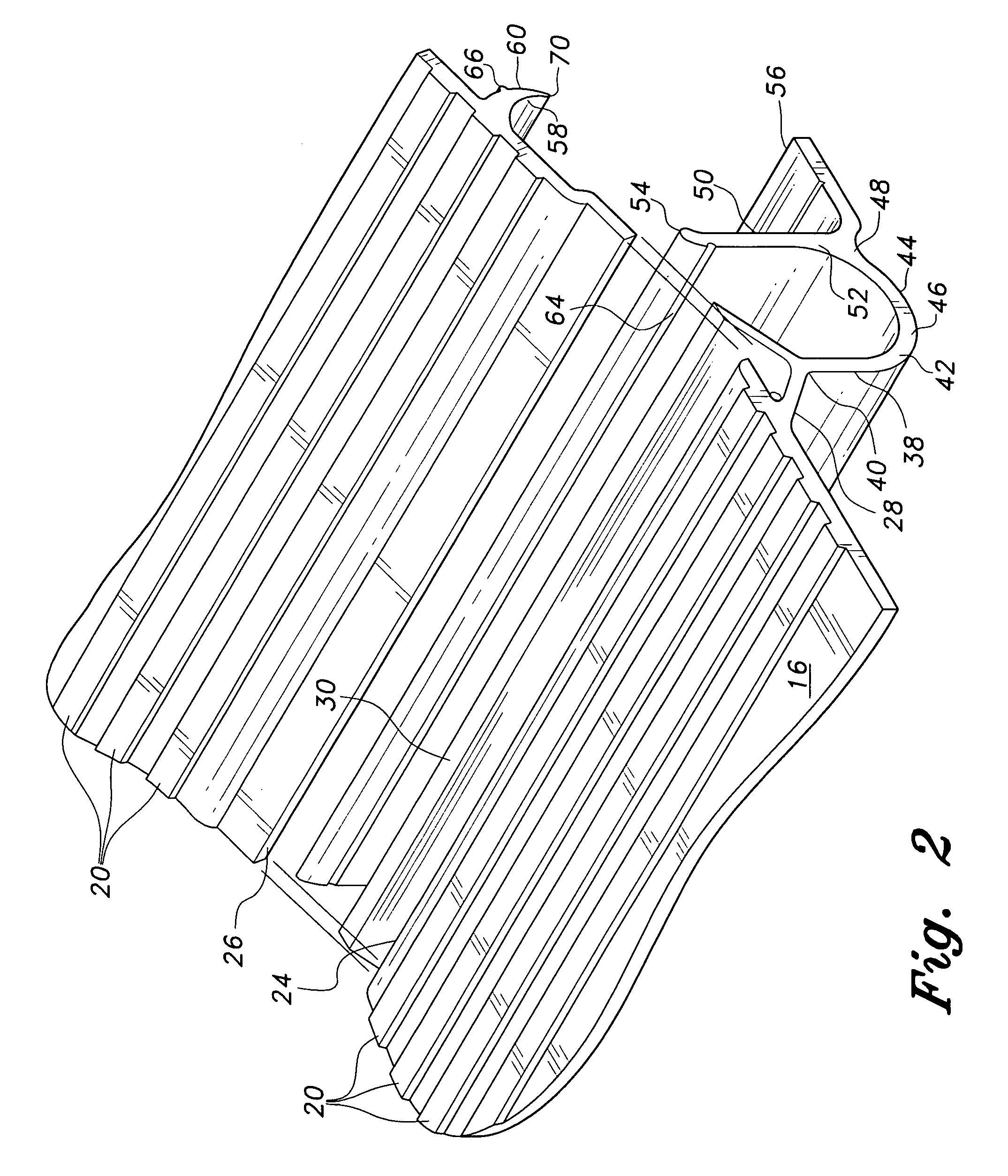Watertight decking
a technology of extruded panels and decking, which is applied in the field of extruded panels, can solve the problems of general unsuitability of extruded panels for use as decks or roof surfaces, limited maximum width, and inability to withstand water, so as to prevent capillary flow or “wicking” and prevent noise from contact. , the effect of adding strength
- Summary
- Abstract
- Description
- Claims
- Application Information
AI Technical Summary
Benefits of technology
Problems solved by technology
Method used
Image
Examples
first embodiment
[0059]FIG. 1 of the drawings provides a perspective view of a panel assembly formed of a series of first embodiment panels, comprising a first end panel 10, a second end panel 12, and an intermediate panel 14. Each of the panels 10 through 14 includes a single wall or ply having a generally flat, planar upper surface 16 and an opposite lower or bottom surface 18 (shown in FIG. 3). The upper surface may be provided with ribs 20 (or other raised or recessed pattern) to provide more secure traction when walking on a deck formed of the present panels. The first and second end panels 10 and 12 each include finished, flanged outboard edges 22, which are not configured to attach to other panels of the present invention. However, the first end panel 10 and intermediate panel 14 each have first attachment edges which positively interlock with the mating second attachment edges of second end panel 12 and other intermediate panels 14 (not shown).
[0060]FIGS. 2 and 3 respectively provide explode...
seventh embodiment
[0080] The seventh embodiment panels of FIGS. 10 through 12 are configured particularly well for providing passage of various fluids for heating or cooling the panels, or for other purposes as desired. Accordingly, one or more pipe fittings, conduits, and / or manifolds may be secured to the ends or edges of the panels 710 through 714, as shown in FIG. 11. A manifold 772 is shown to the left in FIG. 11, separated from the panel assembly in order to show various details. The manifold 772 comprises a continuous plate 774 having a series of tubes or pipes 776 which plug into the corresponding conduits or passages 729 of the panels. Each of the pipes 776 preferably includes an O-ring 778 or other suitable seal to preclude leakage between the pipes 776 and conduits 729. A series of screws 780 engages corresponding screw slots 782, more clearly shown in the detail of FIG. 12, to secure the manifold plate 774 in place on the panel(s).
[0081] Alternatively, single fittings may be used, e.g. th...
ninth embodiment
[0093]FIG. 23 illustrates a cross section of a fifteenth embodiment of the watertight decking panels, with the panels of FIG. 23 having upper walls 1517 and opposite lower walls 1521. It will be noted that the fifteenth embodiment of FIG. 23 is similar to FIG. 14, in that the drawings of the embodiments of FIGS. 14 and 23 illustrate common alternative wall configurations 38, 38a, 38b for the channel, as well as an alternative tongue and groove joint assembly common to both of the embodiments of FIGS. 18 and 23. However, it will be noted that the panel embodiment of FIG. 23 includes a continuous, solid lower wall 1521, with its opposite surfaces 1523 and 1525, in keeping with the continuous, solid lower walls of all of the panel embodiments following those of FIGS. 1 through 5.
[0094] In conclusion, the present watertight decking embodiments provide a positive means of sealing a deck or other surface to prevent the passage of moisture therethrough, without any other steps being requir...
PUM
| Property | Measurement | Unit |
|---|---|---|
| Pressure | aaaaa | aaaaa |
| Flow rate | aaaaa | aaaaa |
| Area | aaaaa | aaaaa |
Abstract
Description
Claims
Application Information
 Login to View More
Login to View More - R&D
- Intellectual Property
- Life Sciences
- Materials
- Tech Scout
- Unparalleled Data Quality
- Higher Quality Content
- 60% Fewer Hallucinations
Browse by: Latest US Patents, China's latest patents, Technical Efficacy Thesaurus, Application Domain, Technology Topic, Popular Technical Reports.
© 2025 PatSnap. All rights reserved.Legal|Privacy policy|Modern Slavery Act Transparency Statement|Sitemap|About US| Contact US: help@patsnap.com



